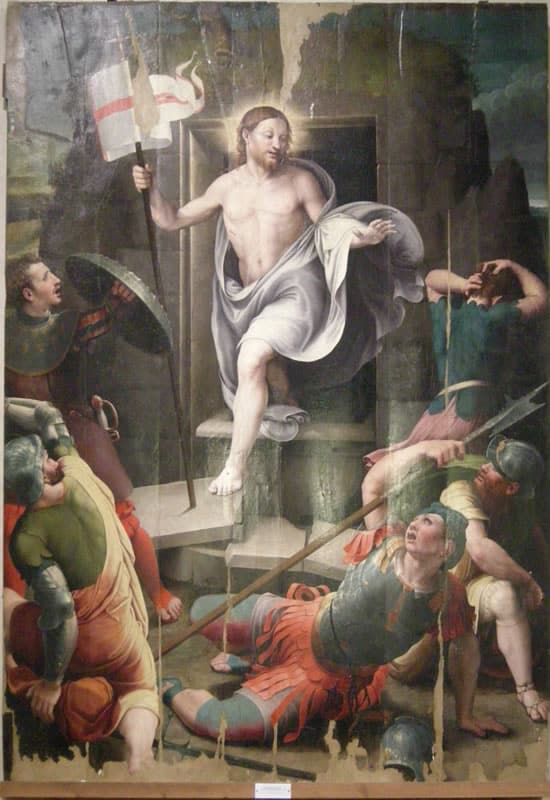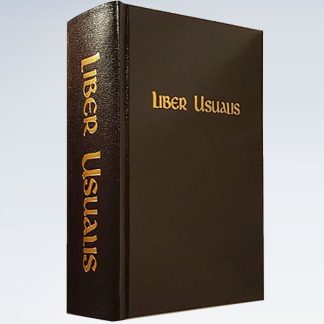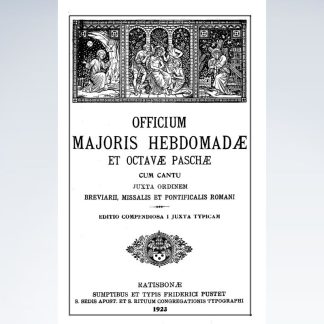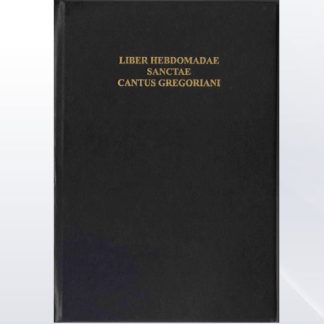

Victimæ Paschali Laudes is one of the medieval sequences that were preserved in the Missale Romanum published in 1570 after the Council of Trent (1545-1563), this poetic liturgical hymn continues to be sung at the Tridentine Mass on Easter Sunday and through its Octave. The Easter sequence, attributed to Wipo of Burgundy (✞ 1048).
This ancient chant tells the story of death and life locked in a struggle, wherein Christ, the Paschal victim, victorious over death, reconciles us to the Father. It tells the story of Mary Magdalene, who upon finding the empty tomb of the risen Christ and of finding the clothes which once covered his head and limbs, proclaims “Christ my hope has arisen.”
Victimæ Paschali Laudes
| Latin | English (literal) |
| Victimæ paschali laudes immolent Christiani. | Let Christians offer sacrificial praises to the Passover victim. |
| Agnus redemit oves: Christus innocens Patri reconciliavit peccatores. | The lamb has redeemed the sheep: The Innocent Christ has reconciled the sinners to the Father. |
| Mors et vita duello conflixere mirando: dux vitae mortuus, regnat vivus. | Death and life contended in a spectacular battle: the Prince of life, who died, reigns alive. |
| Dic nobis Maria, quid vidisti in via? | Tell us, Mary, what did you see on the road? |
| Sepulcrum Christi viventis, et gloriam vidi resurgentis | “I saw the tomb of the living Christ and the glory of his rising, |
| Angelicos testes, sudarium, et vestes. | The angelic witnesses, the clothes and the shroud.” |
| Surrexit Christus spes mea: praecedet suos [vos] in Galilaeam. | “Christ my hope is arisen; into Galilee, he will go before his own.” |
| [Credendum est magis soli Mariae veraci Quam Judaeorum Turbae fallaci.] * | [Happy they who bear the witness Mary’s word believing above the tales of Jewry deceiving.] * |
| Scimus Christum surrexisse a mortuis vere: tu nobis, victor Rex, miserere. [Amen.] [Alleluia.] | We know Christ is truly risen from the dead! To us, victorious King, have mercy! Amen. [Alleluia.] |
* The section beginning “Credendum est”, with its pejorative reference to the Jews, was removed from the Roman Missal (1900) and the Vatican Graduale (1908), which also replaced “præcedet suos (his own)” with “præcedet vos (you)”, and added “Amen” and “Alleluia” to the end.
It was Cardinal Newman who said that to be deep in history is to cease to be protestant. 1955 encyclical Musicae Sacrae, Pius XII added: “It is the duty of all those to whom Christ the Lord has entrusted the task of guarding and dispensing the Church’s riches to preserve this precious treasure of Gregorian chant diligently and to impart it generously to the Christian people. … In the performance of the sacred liturgical rites this same Gregorian chant should be most widely used and great care should be taken that it be performed properly, worthily, and reverently.”

VIRGÓ SACRÁTA is a Christian mission-driven online resource and shop inspired from the beauty of Catholic faith, tradition, and arts. Our mission is to “Restore All Things to Christ!”, in continuing the legacy of Pope St. Pius X under the patronage of the Blessed Virgin Mary. “Who is she that cometh forth as the morning rising, fair as the moon, bright as the sun, terrible as an army set in battle array?” O Mary, conceived without sin, pray for us who have recourse to Thee.





